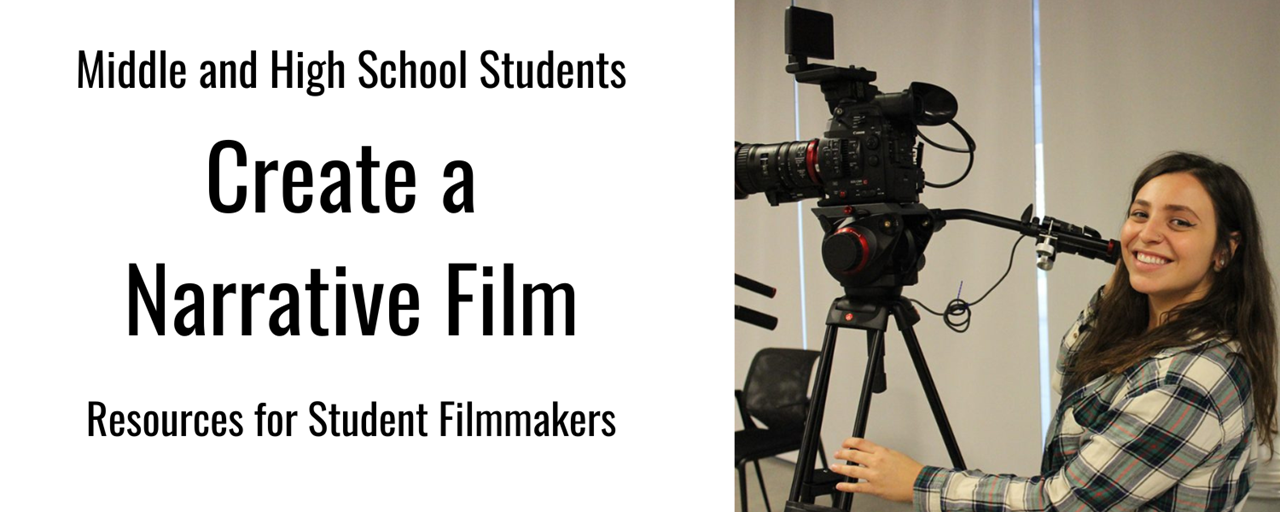Resources for Middle and High School Students

The MY HERO Pocket Field Guide can be printed for students to use as a resource. If you would like to have a smaller, foldable pocket guide, use this link.
| TED Talk The Power of Personal Narrative | J. Christian Jensen
Narrative is one of the most powerfully motivating human forces. Filmmaker J. Christian Jensen reveals how the same emotional forces that thrust us forward in a good film can propel us to do remarkable things. Illustrated by scenes from his Oscar- nominated documentary, White Earth, Jensen tells how to construct your own personal narrative to accomplish things no one else can. |
Steps to Creating a Narrative Film
1. Write your script.
2. Storyboard and Shotlist
3. Shoot footage and gather media for your movie.
4. Edit footage.
5. Add music & titles.
6. Share your film.
RESOURCES FOR STUDENTS TO USE DURING EACH STEP OF THE FILMMAKING PROCESS
STEP ONE: WRITE YOUR SCRIPT
First, do research about the topic and make notes on a computer or notepad
Then create a rough draft of a script - this does not have to be word for word
STEP TWO: STORYBOARD AND SHOT LIST
First, do research about the topic and make notes on a computer or notepad
Then create a rough draft of a script - this does not have to be word for word.
Then create a storyboard, or shot list.
STEP THREE: FILMING: CAMERA SHOTS, ANGLES AND MOVEMENT
Make sure you have good, front-facing lighting and are not backlit.
Get a good angle with your entire face in the shot.
Memorize small parts of your script at a time so that you aren’t reading off the page-- it takes away from the energy and charisma (gaps in between sections are okay, they can be edited out!)
BE ENGAGING! Even if you aren’t passionate about what you are talking about, act as if you are.
STEP FOUR: POST-PRODUCTION AFTER FILMING
Transfer your clips onto whichever device you will be using to edit. A computer is recommended but alternatively, you can use a phone or tablet
Learn how to use your editing platform. See tutorials below.
Include pictures and subtitles, you can find free images on Wikimedia commons.
STEP FIVE: ADD MUSIC AND TITLES
The following three links are resources to copyright free images and sound.
STEP SIX: SHARE YOUR FILM
SUBMIT YOUR FILM TO THE MY HERO INTERNATIONAL FILM FESTIVAL. ONGOING SUBMISSIONS ACCEPTED
The following resource assist those student filmmakers in creating a video using a mobile phone - there are tips to assist them when filming.
Using Canva to Create Videos Tutorials
USE CANVA TO CREATE A SIMPLE VIDEO PROJECT! THIS PAGE HAS MANY TUTORIALS TO GET STARTED.
AMERICAN FILM INSTITUTE SCREEN EDUCATION GUIDE
Organizer created on 8/8/2022 2:53:26 PM by Laura Nietzer
Last edited 11/11/2024 10:51:20 AM by Laura Nietzer